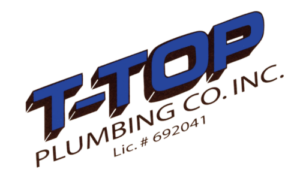Several methods for detecting leaks include visual inspection, pressure testing, acoustic detection, and tracer gas detection. Visual inspection involves physically inspecting pipes and tanks for signs of leaks such as discoloration, corrosion, or puddles of fluid. Pressure testing involves increasing the pressure within a system and monitoring for pressure drops, which can indicate a leak. Acoustic detection involves using sensitive microphones to listen for the sound of leaks, while tracer gas detection involves injecting a gas into the system and using specialized equipment to detect its presence if it leaks out.
Early leak detection can prevent the spread of a leak, reduce the cost of repairs, minimize the impact on the environment, and prevent the loss of valuable resources, while avoiding costly fines and legal liabilities. It can also help companies comply with safety and environmental protection regulations. By identifying and repairing leaks early, companies can improve safety and ensure the uninterrupted operation of their systems, thus minimizing downtime and potential revenue losses.
The frequency of leak detection depends on the system type and the risk level. For example, pipelines that transport hazardous materials may require more frequent leak detection than pipelines that transport water. It is important to follow manufacturer recommendations and regulatory requirements for leak detection.
Various factors, including corrosion, mechanical damage, defective equipment, and human error, can cause leaks. Corrosion is a common cause of leaks in metal pipes and tanks, while mechanical damage can be caused by external forces such as excavation, traffic, or construction activities. Defective equipment, such as faulty valves or seals, can also lead to leaks.
The best method for detecting a leak depends on the specific circumstances of the system being utilized. In some cases, a visual inspection may be sufficient; in others, more advanced methods, such as pressure testing or acoustic detection, may be necessary. Tracer gas detection can be particularly useful for detecting small leaks that may be difficult to detect using other methods.
Leaks can be prevented by following proper installation and maintenance procedures, using high-quality materials, and monitoring the system regularly for signs of damage or wear. Companies can also implement leak detection systems and protocols to quickly identify and address leaks.
The method of repairing a leak depends on the type and severity of the leak. Some common methods include patching the affected area, replacing damaged components, or installing a new system. It is important to follow manufacturer recommendations and safety protocols when repairing leaks.
Regulations that prevent leaks vary by industry and region. For example, the Environmental Protection Agency (EPA) in the United States has regulations related to leaking detection for underground storage tanks. In contrast, the Pipeline and Hazardous Materials Safety Administration (PHMSA) has its own pipeline leak detection regulations.
New technologies include using drones to inspect pipelines and other systems. Sensors can also be used to detect leaks in real-time. These technologies can improve the accuracy and speed of leak detection, reducing the risk of damage and loss. T-Top Plumbing deals with all plumbing issues, including leak detection. If you are looking for a local plumber to handle your problems, then give us a call today.
